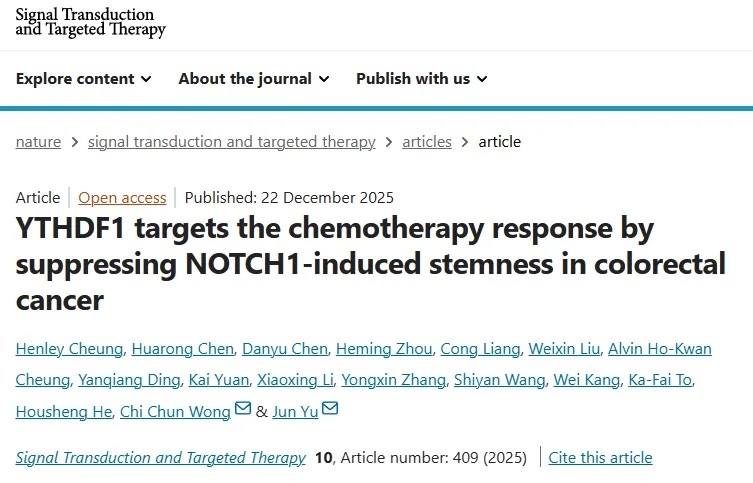Nature:单链DNA成像有望揭示乳腺癌起源
| 导读 | <p align="center"><img src="http://www.bioon.com/biology/UploadFiles/201210/2012102920494532.jpg" alt="" width="219" height="200" border=&quo... |
<p align="center"><img src="http://www.bioon.com/biology/UploadFiles/201210/2012102920494532.jpg" alt="" width="219" height="200" border="0" /></p>
来自美国加州大学戴维斯分校的研究人员首次观察到正准备接受修复时的单链DNA。这项研究有助于人们理解乳腺癌的起源。相关研究结果于本周发表在<em>Nature</em>期刊上。<!--more-->
在细胞中,双螺旋DNA总是会发生断裂。为了修复这种断裂,单链DNA不得不寻找出和发现互补DNA链上的匹配序列。为此,单链DNA首先不得不被蛋白RecA包被。
在这项新的研究中,研究生Jason Bell决定利用论文通信作者Stephen Kowalczykowski实验室在过去十年开发出的技术对被蛋白RecA包被的细菌单链DNA进行成像。研究这种包被过程的工作机制将有助于深入认识促进它的调节蛋白。就人类而言,一种被称作BRCA2的调节蛋白与乳腺癌强烈相关联。
在人体内,RecA也被称作Rad51,它有助于单链DNA在染色体的其他地方找到它的互补性匹配链。RecA不得不替换掉另一种蛋白,即单链DNA结合蛋白,以便结合到这条单链DNA上。
研究人员能够实时观察RecA替换单链DNA结合蛋白,随后在两个方向进行扩散直到整条DNA链被涉猎。
他们发现这种过程开始于两个RecA分子结合到这条DNA单链上。然后,单个RecA分子被添加到DNA单链的任何一端。
令人吃惊的是,在调节蛋白不存在时,这种过程发生得相对较慢。它需要大约30分钟来包被单链DNA,而且要比大肠杆菌完成一轮细胞分裂所花的时间还要长。
这些调节蛋白在控制RecA在单链DNA上的组装速度中发挥着至关重要的作用。如果组装速度太慢的话,那么DNA断裂不能被正确地修复;如果组装速度太快的话,那么它将捕获和包被在正常的DNA复制期间短暂产生的单链DNA片段。在正常条件下,这种过程只在因为遭受损伤或断裂而持续存在的单链DNA上发挥着作用。
Kowalczykowski说,“我确信BRCA2就是按照相同的方式发挥功能。”
<div id="ztload">
<div></div>
<div>
<div>
<img src="http://www.bioon.com/biology/UploadFiles/201210/2012102620413730.jpg" alt="" width="113" height="149" border="0" />
<a title="" href="http://dx.doi.org/10.1038/nature11598" target="_blank">doi: 10.1038/nature11598</a>
PMC:
PMID:
</div>
<div>
<br/><strong>Direct imaging of RecA nucleation and growth on single molecules of SSB-coated ssDNA</strong><br/>
Jason C. Bell, Jody L. Plank, Christopher C. Dombrowski & Stephen C. Kowalczykowski
Escherichia coli RecA is the defining member of a ubiquitous class of DNA strand-exchange proteins that are essential for homologous recombination, a pathway that maintains genomic integrity by repairing broken DNA1. To function, filaments of RecA must nucleate and grow on single-stranded DNA (ssDNA) in direct competition with ssDNA-binding protein (SSB), which rapidly binds and continuously sequesters ssDNA, kinetically blocking RecA assembly2, 3. This dynamic self-assembly on a DNA lattice, in competition with another protein, is unique for the RecA family compared to other filament-forming proteins such as actin and tubulin. The complexity of this process has hindered our understanding of RecA filament assembly because ensemble measurements cannot reliably distinguish between the nucleation and growth phases, despite extensive and diverse attempts2, 3, 4, 5. Previous single-molecule assays have measured the nucleation and growth of RecA—and its eukaryotic homologue RAD51—on naked double-stranded DNA and ssDNA6, 7, 8, 9, 10, 11, 12; however, the template for RecA self-assembly in vivo is SSB-coated ssDNA3. Using single-molecule microscopy, here we directly visualize RecA filament assembly on single molecules of SSB-coated ssDNA, simultaneously measuring nucleation and growth. We establish that a dimer of RecA is required for nucleation, followed by growth of the filament through monomer addition, consistent with the finding that nucleation, but not growth, is modulated by nucleotide and magnesium ion cofactors. Filament growth is bidirectional, albeit faster in the 5′3′ direction. Both nucleation and growth are repressed at physiological conditions, highlighting the essential role of recombination mediators in potentiating assembly in vivo. We define a two-step kinetic mechanism in which RecA nucleates on transiently exposed ssDNA during SSB sliding and/or partial dissociation (DNA unwrapping) and then the RecA filament grows. We further demonstrate that the recombination mediator protein pair, RecOR (RecO and RecR), accelerates both RecA nucleation and filament growth, and that the introduction of RecF further stimulates RecA nucleation.
<br/>来源:生物谷
</div>
</div>
</div>
来自美国加州大学戴维斯分校的研究人员首次观察到正准备接受修复时的单链DNA。这项研究有助于人们理解乳腺癌的起源。相关研究结果于本周发表在<em>Nature</em>期刊上。<!--more-->
在细胞中,双螺旋DNA总是会发生断裂。为了修复这种断裂,单链DNA不得不寻找出和发现互补DNA链上的匹配序列。为此,单链DNA首先不得不被蛋白RecA包被。
在这项新的研究中,研究生Jason Bell决定利用论文通信作者Stephen Kowalczykowski实验室在过去十年开发出的技术对被蛋白RecA包被的细菌单链DNA进行成像。研究这种包被过程的工作机制将有助于深入认识促进它的调节蛋白。就人类而言,一种被称作BRCA2的调节蛋白与乳腺癌强烈相关联。
在人体内,RecA也被称作Rad51,它有助于单链DNA在染色体的其他地方找到它的互补性匹配链。RecA不得不替换掉另一种蛋白,即单链DNA结合蛋白,以便结合到这条单链DNA上。
研究人员能够实时观察RecA替换单链DNA结合蛋白,随后在两个方向进行扩散直到整条DNA链被涉猎。
他们发现这种过程开始于两个RecA分子结合到这条DNA单链上。然后,单个RecA分子被添加到DNA单链的任何一端。
令人吃惊的是,在调节蛋白不存在时,这种过程发生得相对较慢。它需要大约30分钟来包被单链DNA,而且要比大肠杆菌完成一轮细胞分裂所花的时间还要长。
这些调节蛋白在控制RecA在单链DNA上的组装速度中发挥着至关重要的作用。如果组装速度太慢的话,那么DNA断裂不能被正确地修复;如果组装速度太快的话,那么它将捕获和包被在正常的DNA复制期间短暂产生的单链DNA片段。在正常条件下,这种过程只在因为遭受损伤或断裂而持续存在的单链DNA上发挥着作用。
Kowalczykowski说,“我确信BRCA2就是按照相同的方式发挥功能。”
<div id="ztload">
<div></div>
<div>
<div>
<img src="http://www.bioon.com/biology/UploadFiles/201210/2012102620413730.jpg" alt="" width="113" height="149" border="0" />
<a title="" href="http://dx.doi.org/10.1038/nature11598" target="_blank">doi: 10.1038/nature11598</a>
PMC:
PMID:
</div>
<div>
<br/><strong>Direct imaging of RecA nucleation and growth on single molecules of SSB-coated ssDNA</strong><br/>
Jason C. Bell, Jody L. Plank, Christopher C. Dombrowski & Stephen C. Kowalczykowski
Escherichia coli RecA is the defining member of a ubiquitous class of DNA strand-exchange proteins that are essential for homologous recombination, a pathway that maintains genomic integrity by repairing broken DNA1. To function, filaments of RecA must nucleate and grow on single-stranded DNA (ssDNA) in direct competition with ssDNA-binding protein (SSB), which rapidly binds and continuously sequesters ssDNA, kinetically blocking RecA assembly2, 3. This dynamic self-assembly on a DNA lattice, in competition with another protein, is unique for the RecA family compared to other filament-forming proteins such as actin and tubulin. The complexity of this process has hindered our understanding of RecA filament assembly because ensemble measurements cannot reliably distinguish between the nucleation and growth phases, despite extensive and diverse attempts2, 3, 4, 5. Previous single-molecule assays have measured the nucleation and growth of RecA—and its eukaryotic homologue RAD51—on naked double-stranded DNA and ssDNA6, 7, 8, 9, 10, 11, 12; however, the template for RecA self-assembly in vivo is SSB-coated ssDNA3. Using single-molecule microscopy, here we directly visualize RecA filament assembly on single molecules of SSB-coated ssDNA, simultaneously measuring nucleation and growth. We establish that a dimer of RecA is required for nucleation, followed by growth of the filament through monomer addition, consistent with the finding that nucleation, but not growth, is modulated by nucleotide and magnesium ion cofactors. Filament growth is bidirectional, albeit faster in the 5′3′ direction. Both nucleation and growth are repressed at physiological conditions, highlighting the essential role of recombination mediators in potentiating assembly in vivo. We define a two-step kinetic mechanism in which RecA nucleates on transiently exposed ssDNA during SSB sliding and/or partial dissociation (DNA unwrapping) and then the RecA filament grows. We further demonstrate that the recombination mediator protein pair, RecOR (RecO and RecR), accelerates both RecA nucleation and filament growth, and that the introduction of RecF further stimulates RecA nucleation.
<br/>来源:生物谷
</div>
</div>
</div>
 腾讯登录
腾讯登录
还没有人评论,赶快抢个沙发